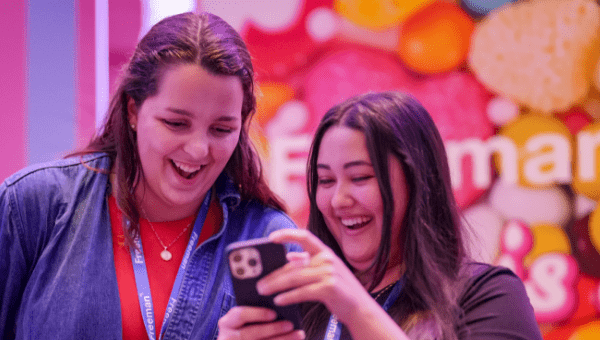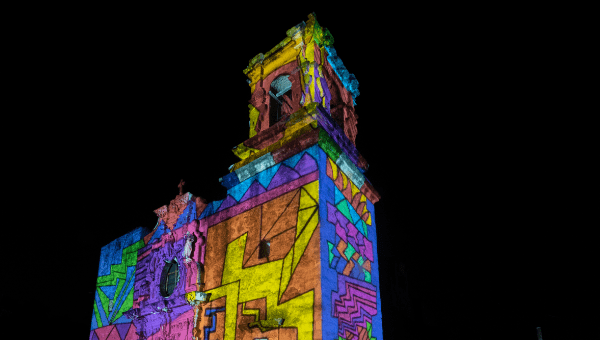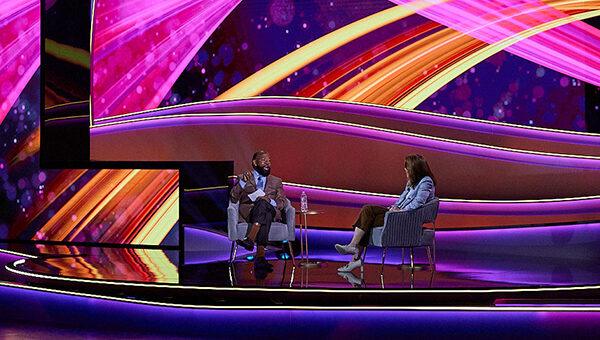Why brand experience is the future of marketing
Brand experiences don’t just communicate — they connect.
We’ve all heard that the marketing industry is evolving at a breakneck speed. But actually it’s our audiences that are doing the evolving. As marketers, we’re all just trying to keep up.
And we have those audiences to thank for the rising popularity of the new medium of brand experience. Executed with authenticity, it’s an immersive, holistic, humanistic messaging platform that appeals to a new type of consumer: one who is willing to spend a little time getting to know the brands they’re considering.
So what is the brand experience medium exactly?
We get asked this question a lot. Live interactions with brands have been around forever, but the new medium of brand experience is leveraging technology, data, and storytelling to reinvent the live experience.
Let’s start with a definition of brand experience:
A brand experience is about designing a sensory experience that brings a person into a lasting and meaningful relationship with a brand.
The term “brand experience” came to life as many other terms in the marketing industry do — with the evolution of the media and channels that we use to communicate a brand’s message or story. There have been other terms used to describe our offering, such as “live events,” “event marketing,” “experiential marketing,” “sponsorship activation,” and the like. But what these terms fail to do is include one small but invaluable word: branding.
Branding is the ultimate goal of all marketing communications, is it not? And a brand experience is a more open-ended concept of branding, with a larger, more colorful set of tools at our disposal.
The needs of brands and their audiences have set off a boom in the brand experience space — according to the Ad Age 2017 Top Agency Report, brand experience is growing faster than advertising, PR, CRM, and media, at a rate second only to digital.
And our own recent independent survey of global B-to-B and B-to-C marketers, launching soon to the industry, shows that marketers increasingly understand the importance of the brand experience channel. More than two-thirds of them agree that brand experience is an effective way to reach their goals, and over half the CMOs polled said that brand experience gives them the ability to create ongoing relationships with their key audiences.
Here are some reasons we think the category is growing at an accelerated pace: Humans have an intrinsic need to make connections with one another. We like to hang with our tribes. And part of what makes a successful connection is finding the right place to make it happen. Look at places like Starbucks — as a company, it understands that people don’t just come to stores to grab a coffee and go. They want a place to meet with friends, a relaxing hour with a book, a mobile workspace, a familiar and comfortable living room atmosphere no matter where they go in the world.
That’s why Starbucks created its stores around the sociological concept of the “third space,” which refers to a welcoming community space that fosters feelings of safety and inclusion. This creates the perfect environment in which to connect face to face, and the more people connect like that, the more face-to-face connections they crave. The brand experience category speaks to that need on a higher level and bridges the gap between brands and people to make those connections possible.
We keep evolving
We’ve all seen the research. Today’s consumers are changing, and their values and sensibilities are changing as well. This is a society that values meaningful engagement, which can’t be copied or faked. They crave authenticity and social awareness. They are attracted to inspirational organizations, and they want to know that their money is contributing to ethical, responsible, and sustainable businesses. In other words, they’re seeking more of a relationship from the brands they choose to support.
They’re also much more marketing savvy, or maybe more to the point, wary. They use ad blockers. They opt out of email campaigns. They are much more fluid in their ability to blur demographic lines, and resist being put in neat little boxes. In short, just because you build it doesn’t mean they will come.
They are also much more interested in collecting memories rather than “stuff.” They’re increasingly realizing that experiences, not consumption, drive lasting well-being. In order to win their hearts, marketers have to provide them with a unique and engaging experience that will resonate with these sensibilities.
To make things even more interesting, there are now five generations in the workplace. In this “5G society,” people form tribes based on shared values rather than by age. The diversity factor isn’t celebrated — it’s expected.
This is where brand experience offers a fantastic opportunity. They allow brand marketers to spend a little time in the same room with their audiences, having face-to-face conversations. And what could be more authentic than that?
Brand experience offers a nice mix of lo-fi and hi-fi
This channel creates a tremendous opportunity for brands to do what technology or media can’t on their own: create immersive experiences that blend analog, digital, and hybrid environments to connect people in meaningful ways.
Today’s audiences have become incredibly sophisticated when it comes to technology. They aren’t passive participants anymore, wandering around a show floor hoping something catches their eye. Instead, they represent the collaborative community: those who prefer to take an active role in the curation, creation, and ownership of content during a brand experience.
Around the globe, cloud computing has enabled new ways for brands to communicate and customize the experiences and services they offer. Thanks to the cloud culture, technology can help brands create an ongoing conversation with their audiences, by actively engaging them before, during, and after an event.
Most forms of marketing start with the channel and try to work the brand narrative into it. With brand experience, you can start with a totally clean slate, design the world and write the story, and then use any combination of elements to bring it all to life in a physical space.
Make the consumer — not the brand — the star of the show
Technology does a great job of expanding our palette to tell stories, but at the end of the day, this business is still about connecting with people. To help us inspire those stronger connections, personalization is key. Or rather, hyper-personalization.
Personalization has already become the expectation. Hyper-personalization pairs predictive technology with data to provide a much deeper understanding of your audience. The end result is that your guests barely have to do any work, because you’ve designed the experience to come to them.
It all starts before the show, with guests creating a digital profile. From there, beacon-enabled technology can pair with a mobile app to alert audiences to relevant sessions, lectures, or booths that match their interests. You can even manipulate digital signage using location-based tech to alert passersby of information that is of interest to them. Even the future of show booths is showing flashes of brilliance.
The next logical steps are combining voice and face recognition software, virtual wallets, smart holograms, and 3D printers to provide a level of personalization never seen before. Someday soon, a guest will literally be able to wander around and design their own brand experience on the go.
Emotions are a strong call to action
Storytelling has always had the power to move people. That is why brands like Disney have always enjoyed deep relationships with their customers. They use a combination of beauty and humanistic storytelling to inspire meaningful connections with their audience.
More than just about every other vehicle, a brand experience gives us the rare opportunity to really humanize a brand and tell its story. A story isn’t a laundry list of marketing strategies. It’s a transparent, engaging, and poignant narrative that humanizes what your brand is trying to do. To properly create an engaging story, first you have to determine the inspiration behind the brand, and what you want the audience to feel.
Building a world around the audience in which you can frame that story is how brand experience can allow them to connect more deeply than any other medium. The more beautiful and human the story is, the more the audience will feel a personal connection with the brand. And those connections can pay serious dividends for a brand down the road.
Time is of the essence
Ultimately, this medium can offer a brand something that many other marketing channels cannot: time.
We are inviting a guest to interact with a brand and immerse themselves in that brand’s story. They have agreed to attend, and they would like to be entertained and inspired in return. They want to feel a connection. They have given us their time and their attention. What a fantastic opportunity to authentically engage them.
Unlike other channels, which are busy competing with an increasing amount of white noise, a brand experience is a chance for audiences and brands to stop, take a breath, focus on each other, and share an experience together.
We have to make the most of that time. People are craving more authenticity in their lives, and they expect no different from brands. Therein lies the power of a brand experience, and that’s why we believe it has the potential to be the future of marketing.
Let’s Get Started
Reach out and request a consultation.



